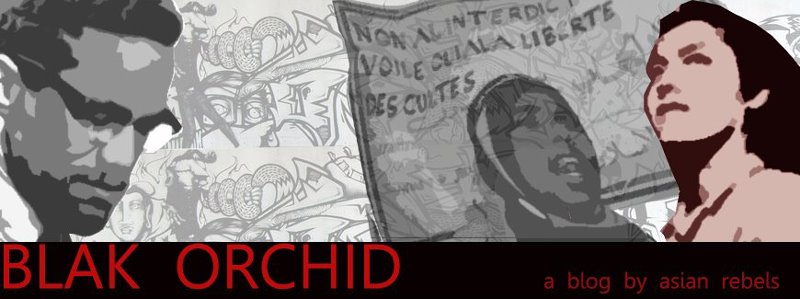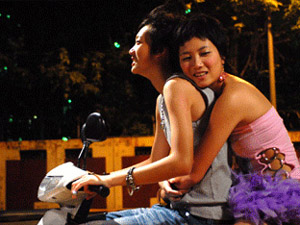Arab and Muslim Youth Take the Lead
The newest round of attacks by Israel against the people of Palestine has been bold, outrageous, and tragic. However, these attacks have been met worldwide by an increasingly bold, confident, and outraged solidarity movement. Thousands of people have come together to protest Israel's violence in marches and rallies across the Middle East, Asia, Africa, Europe, and the Americas, while just a month ago, these rallies would likely have drawn only a few dozen. The numbers, however, are just the beginning of what makes these recent actions different from what Palestine solidarity activists have seen in the past.
On Saturday, January 3rd, Seattleites witnessed the largest Palestine solidarity march to take place in their city in years. Nearly 1000 people came out into the streets of downtown Seattle. The multiracial character of the crowd, comprised of Arabs, South Asians, East Asians, Southeast Asians, Black and Jewish folks, and also the multigenerational participation, ranging from pre-schoolers to people in their 60s and 70s, further distinguished this march from its predecessors.
As the week progressed, 500 more Gazans were murdered by the Israeli Defense Forces, bringing the total number to 850. On January 10th, the weekly Palestine solidarity protest outside of the federal building on the 700 block of Stewart Avenue reconvened for another day of struggle.
The event started off with protesters lining up along the sidewalk, waving signs such as "End the Siege in Gaza" and "End the Occupation". A lonely Zionist stood across the street waving an Israeli flag, but with no support. Many of the motorists that drove by honked their horns in encouragement, smiled, and waved at the Palestine solidarity rally. As the afternoon proceeded nearly two hundred people came out to support the people of Palestine. The coalition organizing the rally began to lead the crowd in chants, and settled in for a number of speeches by coalition members.
As the speeches continued, however, over thirty of the youngest protesters, ranging from 8 to 15 years old, amassed across the street, engaging in chants of their own. With the bulk of the protesters on the other side of Stewart Avenue, the youth fearlessly confronted the handful of Zionist counter-protesters that had gathered. One of these Zionists shouted "Kill them all!" at these young, yet very brave Arab and Muslim youth.
Determined to maintain the energy of this past week, the youth crossed the street joining the other protesters and starting their own march up and down the block. Our organization, Democracy Insurgent, decided to join with them and offered them our megaphone. To the rest of the rally, the youth announced that they were taking their march into the city for all to see. They led a small march through the downtown area, chanting all the way. As we returned to the rally, we were all determined to pick up more supporters, and as we walked through, the vast majority of the crowd joined in the impromptu march, following the leadership of it youngest members. These youth chose some of the most radical chants, from "Takbir-Allahu Akbar" (God is Great) to "Long Live the Intifada" and "Hey Obama, why the silence, speak out against this violence."
What had began as a stationary rally organized by the older members of the community turned into a democratic movement to reclaim the streets led by the youth. The level and scope of participation by these seemingly marginal members of the community is reminiscent of the popular character of the first Intifada in the late 1980s. While ardent patriarchs see the struggle for Palestine, and national liberation everywhere, as the sphere for adult men only, the first Intifada owed its success to the massive participation and leadership by Palestinian women and young people. Not only did Israel lose control on the armed fronts, but the Zionists lost control of Palestine as a whole, and a democratic society broke out in its place.
A free Palestine can only be won by a democratic movement from below; this means equal participation from every sector of society. With the traditional Palestinian political leadership exiled in Algeria, Palestinian women and students looked to themselves for leadership and created one of the most powerful direct democratic movements the world has seen. This goes to show that the explosion of vibrant movements often requires the emergence of new leadership and new energy. From Seattle to Gaza, Zionists claim that Arab and Muslim youth are being manipulated by their parents when they rise up, but the opposite is actually the case: often, they have led their parents towards a more democratic struggle.
On January 10th in Seattle we saw only a glimpse of how strong we really are, and what we can accomplish in a democratic movement. The Arab and Muslim youth, leading the community, forced the police to accept their demands to march even without a permit. Convening in Westlake Plaza, the youth took the stage and led the crowd in another round of chants. We joined with hundreds of thousands of brothers and sisters in Baghdad, London, Alexandria, and Nairobi to fight alongside the Palestinians resisting Israeli occupation.
The presence of Arabic chants and Islamic slogans in these demonstrations has scared the cops, the Zionists, and some folks in the community. But we believe these expressions of faith and culture are a key part of the anti-racist character of these spontaneous actions. Arab and Muslim youth have had enough. It's about time we say, "We're right here, we're not going anywhere, so you better get used to hearing Allahu Akbar shouted in our streets."
This moment is marked by a different mood; a belief that now is the time to demand more from politicians and professional rulers. Now is the time when a democratic solidarity movement can take the reins of history and steer it towards a more just world. Arab and Muslim people, and solidarity activists the world over, are breaking out of the old forms of political actions that were more timid and less confident, demanding a democratic vision of Palestine solidarity that haunts Israel's dreams.
Democracy Insurgent is a Middle East solidarity group on the UW campus animated by principles of democracy, anti-racism, Third World feminism, and queer liberation. We are people of different racial, ethnic, religious, and non-religious backgrounds, and this is our strength. We are launching a campaign to demand that UW break off academic ties with Israel. We believe UW should be for education, not for aiding occupation. To contact us, please email: d.insurg@gmail.com







